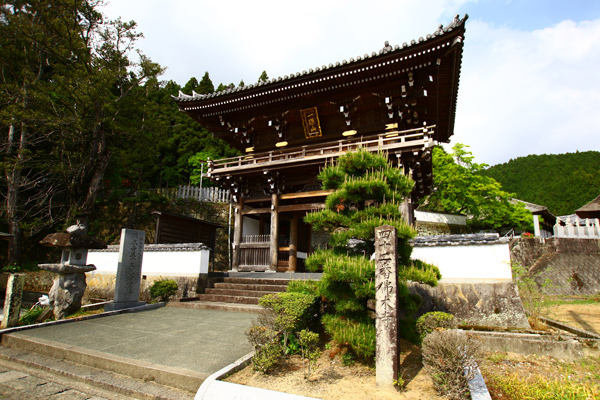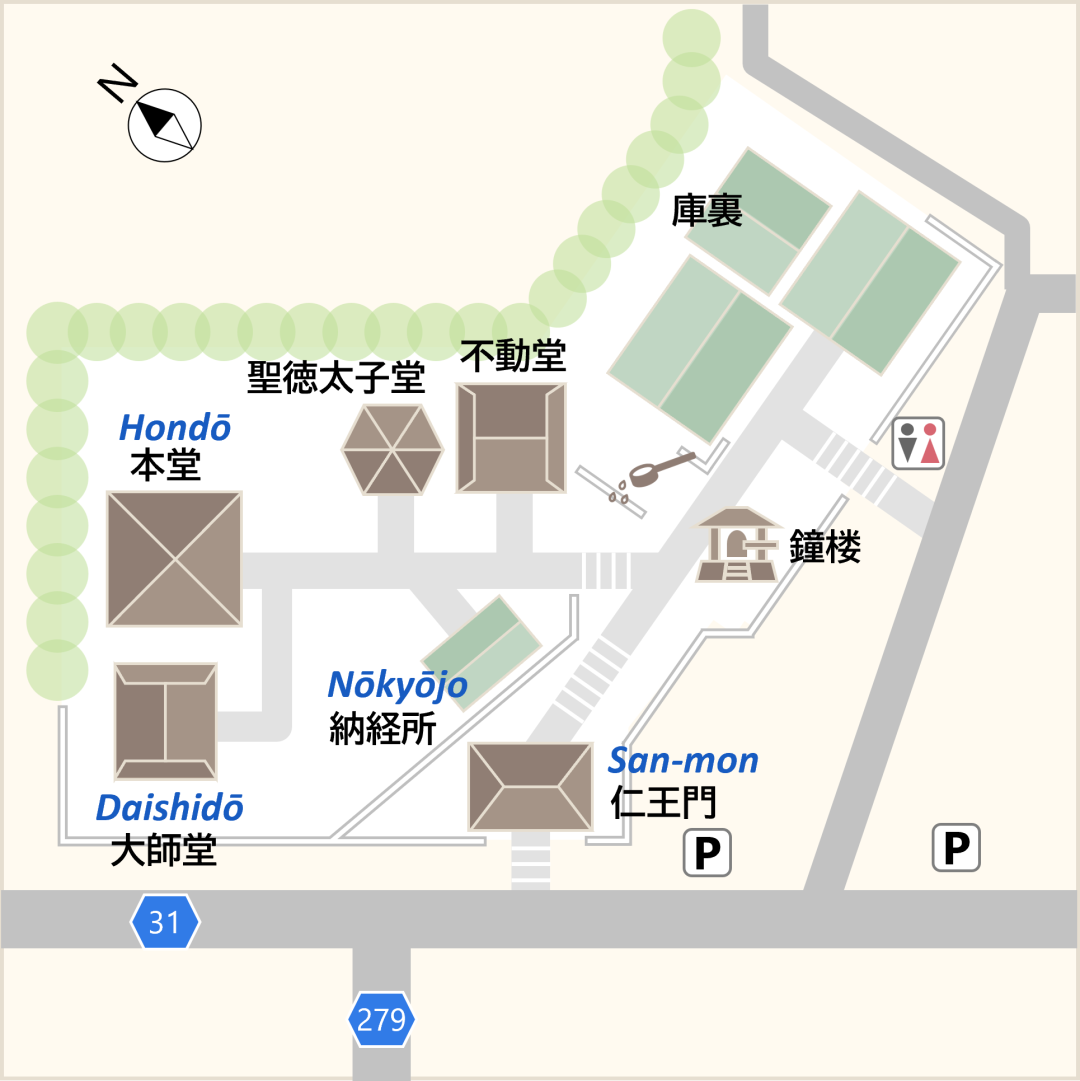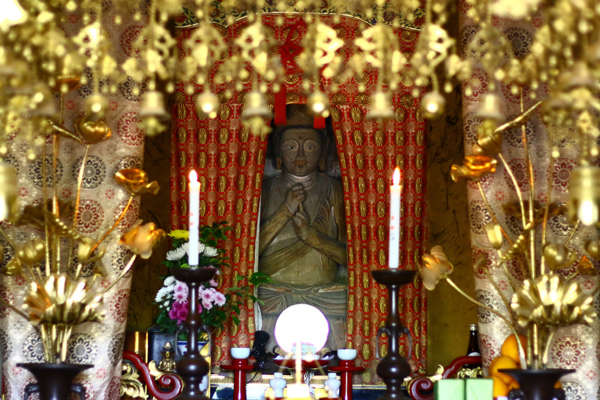The Shikoku Pilgrimage Temple Guide
Temple 42, Butsumokuji

Precinct map

History of the temple
Butsumokuji is the site of a legend of Kobo Daishi riding on the back of an ox, which has been passed down through the generations. There is a small building there called Kachikudo. Miniature cow and horse sandals, ceramics of cows and horses, and oblong plaques are displayed here and there within this hall. Neighborhood farmers used to visit the temple after rice planting was finished, receive fuda (talismans) to protect their cows and horses, and put them on pillars in their barns. In the past, farmers prayed only for the safety of their livestock. In recent years, people have been making offerings to the spirits of animals in general, including their pets. Breeders of fighting bulls also pray here.
Around the year 807, Kobo Daishi met an old man pulling a bull here. At the old man’s suggestion, he rode on the back of the bull. As he did, he saw a single jeweled gem hanging from the top of a large camphor tree, radiating light. When he looked at it carefully, he saw it was a jewel that he had cast toward the east along with a three-pointed vajra (a Buddhist ritual implement) when he was about to return from China, in the hope that he would find a favorable place to build a temple. He was convinced that this was a sacred place, so decided to build a temple here. He carved a statue of Dainichi Nyorai (Mahāvairocana) from a camphor tree, and inserted the jewel between the eyebrows. He enshrined this statue as the principal image of the temple, named the temple Ikkazan Butsumokuji, and dedicated a copy of the Heart Sutra and the first volume of the Avatamsaka Sutra to the temple.
After that, the temple was venerated and known as Dainichi-sama. It was considered a guardian of cattle and horses. During the Kamakura period (1185-1333), the temple prospered as the family temple of the Saionji family, the lords of Uwajima. During the Sengoku period (1467-1590), the temple suffered from warfare and other hardships, but it was rebuilt and is now full of vitality.
Highlights
Principal image of Dainichi Nyorai
Designated a Prefectural Cultural Property. The statue is 1.2 meters tall, and is made of multiple pieces of wood. It has an inscription that says it was made during the Kamakura period. Another inscription, on the back of the statue, says there is a small statue of Dainichi Nyorai, carved by Kobo Daishi, inside.
Kachikudo (Livestock Hall)
Every year on the day of the Ox of Doyo, the temple gives blessings and prayers for the fulfillment of wishes of humans and animals in the Kachikudo.
Shorodo
The Shorodo (Bell Tower) has a thatched roof, which is rare among Shikoku pilgrimage temples. It was rebuilt during the Genroku era (1688-1704).

Annual Events
| January 1 | Shushoe (New Year's Prayer Ritual) |
| February 3 | Hoshi Matsuri (Star Ritual for Warding off Evil) |
| April 19 | Dainichi Nyorai Day |
| May 5 | Hana Matsuri (Buddha's Birthday) |
| Late July | Kiuri Fuji Kitoe (Cucumber Prayer Ritual) |
Details
Names: Ikkasan, Butsumokuji
Denomination: Shingon sect, Omuro school
Principal Image: Dainichi Nyorai
Founder: Kobo Daishi
Founded: 807
Access
Address: 1683, Sunawachi, Mima-cho, Uwajima City, Ehime 798-1102
Phone: 0895-58-2216
Parking: Available (free of charge)
Lodging: None
Official website: None
